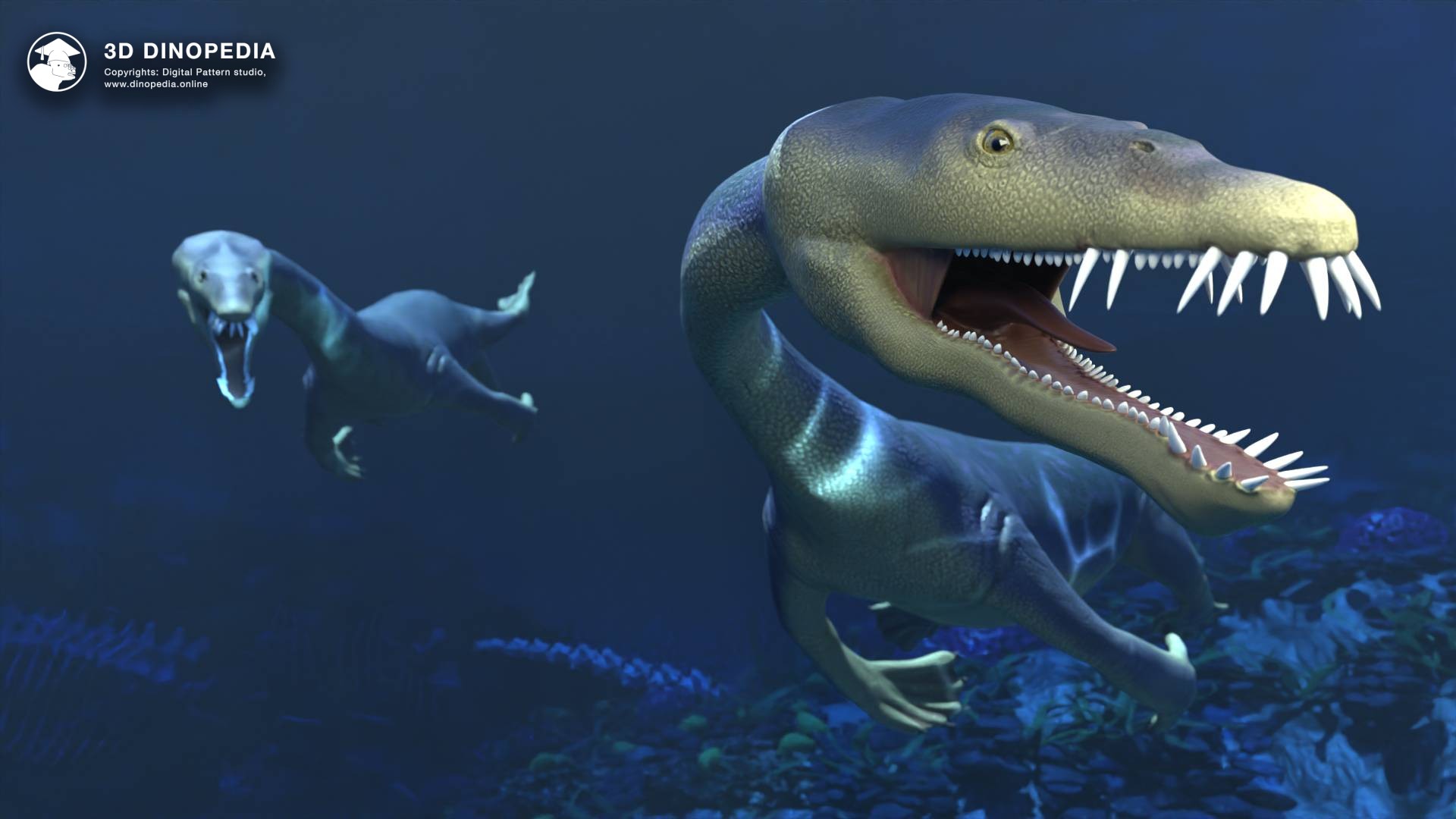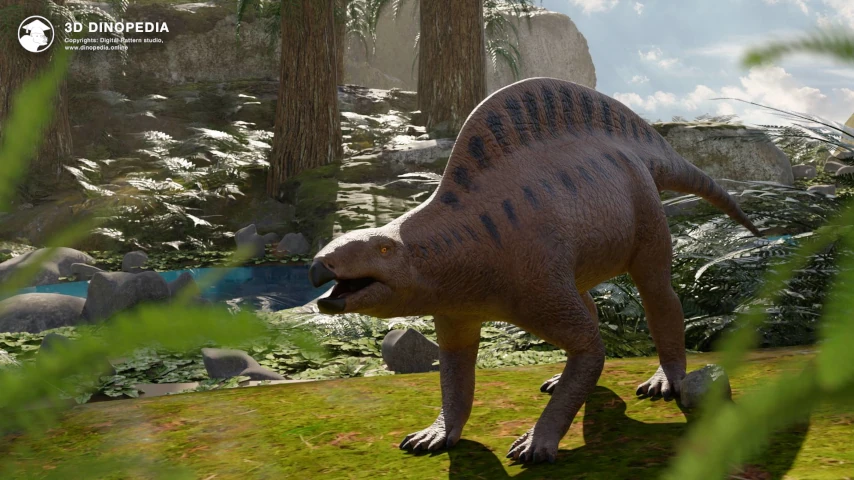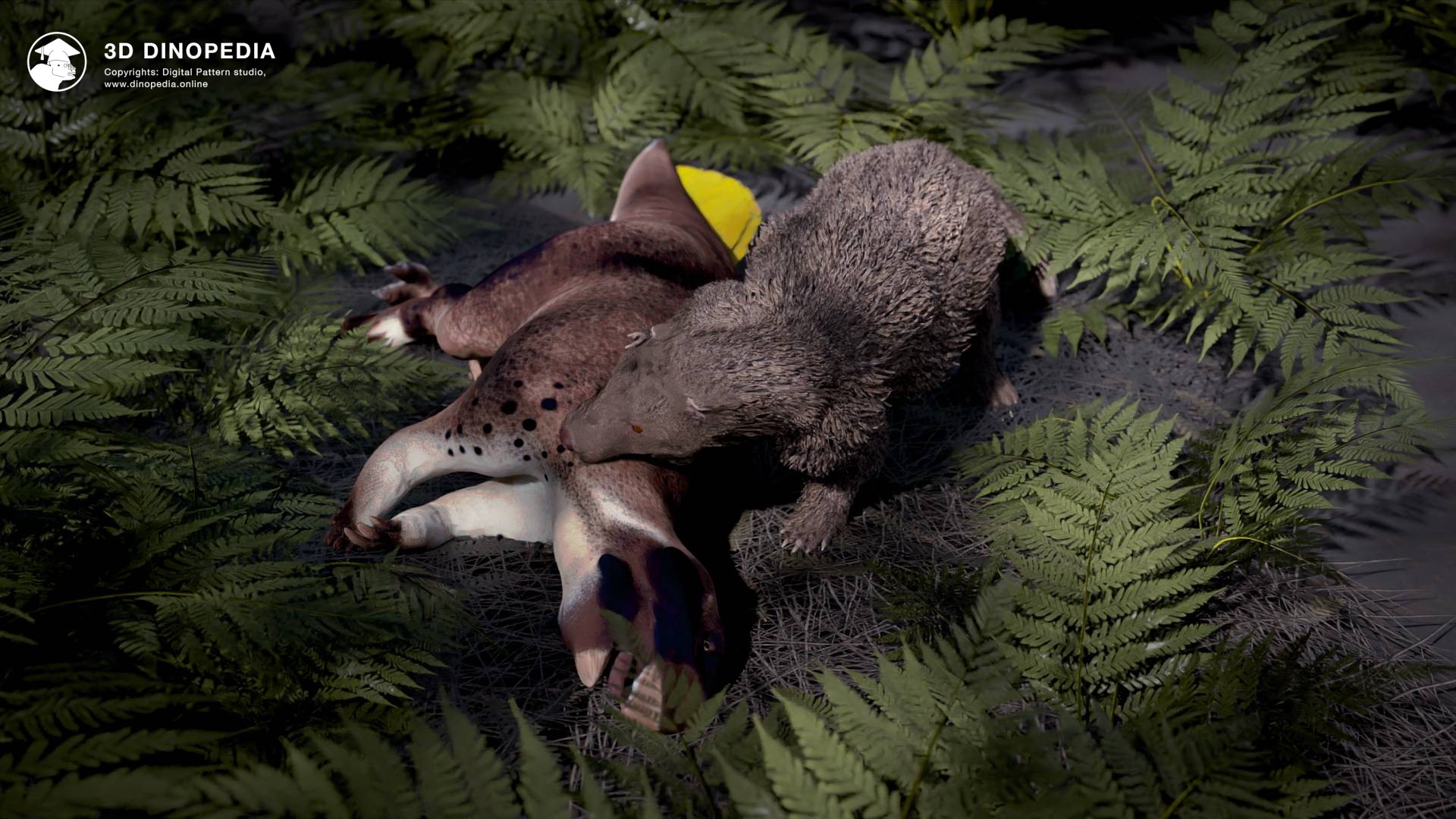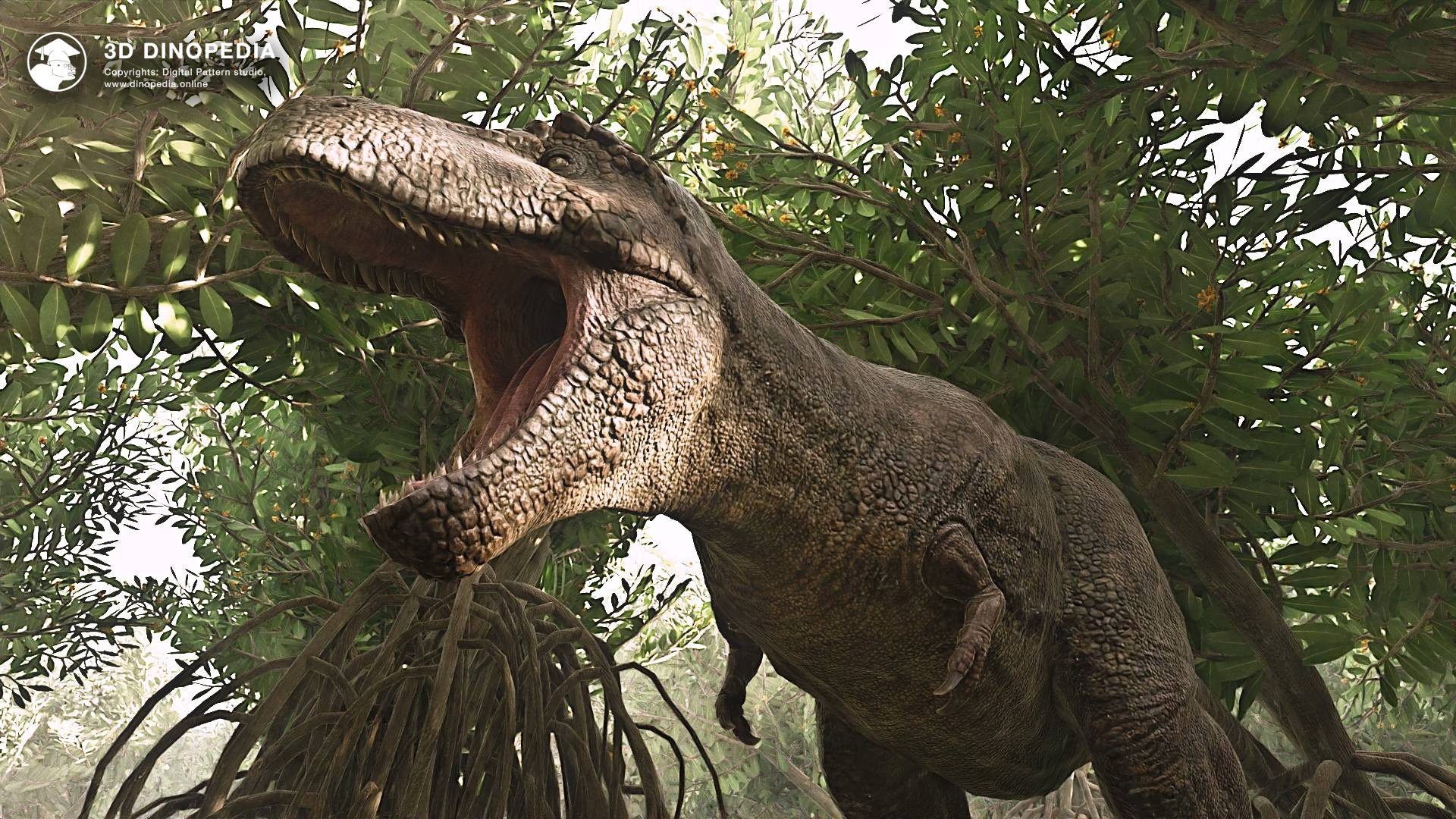Nothosaurs, Plesiosaurs, and the Mystery of the Long Neck
16.01.2024 08:38
4043 views

One of the most famous marine reptiles coexisting with dinosaurs were the plesiosaurs. These animals are easily distinguished by their elongated, barrel-shaped bodies and four flippers. Among this large order of extinct animals, the suborder of plesiosaurids - powerful predators with large heads and short necks (e.g., plesiosaur, liopleurodon) and, actually, plesiosauroids - animals with long necks and tiny heads (e.g., cryptoclidus, elasmosaurus, muraenosaurus) - are distinct in appearance. The first plesiosaurs on Earth had long necks, and from them, short-necked forms later appeared.
Why was this strange, excessively long neck necessary? After all, other predators could easily grab such a thin neck. Indeed, this did happen, as evidenced by fossil remains of unlucky decapitated animals. So, what was the point of this risk? And did the ancestors of the first plesiosaurs have long necks, or did the neck gradually "stretch"? Let's start with the last question. To answer it, we need to refer to the known skeletons of the oldest animals from the Triassic period (252 – 201 million years ago).
Interestingly, it might sound surprising, but ichthyosaurs, which resemble fish, and long-necked plesiosaurs are relatives. However, this may not be so surprising, as all living creatures on Earth are related to each other to some extent. But they are much closer to each other than, say, to dinosaurs or lizards. So calling them "marine lizards" or "marine dinosaurs" is decidedly incorrect. But "marine reptiles" - is significantly better. The last common ancestor of a hypothetical elasmosaurus (Elasmosaurus) and ophthalmosaurus (Ophtalmosaurus) lived at the end of the Permian period. All marine reptiles began their return journey to the water from land, transforming from terrestrial animals into aquatic ones. Most likely, the last common ancestor of the famous marine reptiles already led a semi-aquatic lifestyle.
A very interesting animal in the history of ancient marine reptiles is the helveticosaurus (Helveticosaurus). This animal grew up to 2 meters in length - slightly smaller than the modern Komodo dragon. And in many ways, it resembled a Komodo dragon, only it led a semi-aquatic lifestyle. It is interesting because it was maximally close to the ancestors of the large group of Sauropterygia, one might say, an uncle to them all.
So, we learned about another group of marine animals. Who were they? Among the Sauropterygians, two very large groups of living creatures can be distinguished. The first is the placodonts (Placodontia). Placodonts were mostly characterized by flattened teeth, for cracking shells and carapaces of marine delicacies, as well as a flattened body, partially covered by a shell. Many of them resembled turtles in appearance. An interesting example of placodonts is the henodus (Henodus) - a spitting image of a turtle! The second group is the eosauropterygians (Eosauropterigia). And these are our long-necked acquaintances.
Perhaps the very first animal in this group, the founding father of the long-necks, can be considered the hanosaurus (Hanosaurus). This animal is known from the earliest Triassic strata of China, i.e., it lived about 250 million years ago. Like most ancestors of a large and diverse group of animals, hanosaurus was quite modest in size, being only about 80 centimeters long. At that time, it still had legs, not flippers, and its neck was only slightly elongated compared to modern lizards. However, it had thickened, heavy bones. With such a skeleton, it would have been difficult to stay on land for long, which means it preferred to spend most of its life in the water, searching for small marine animals.
The further evolutionary path of eosauropterygians is somewhat complicated. Most likely, from hanosaurus, the first pachypleurosaurs (Pachypleurosauria) appeared, which also became quite numerous during the Triassic period. They were little different from hanosaurus, still being small semi-aquatic animals, with not particularly long necks, and limbs in the form of legs. Possibly also from hanosaurus, or from the first pachypleurosaurs, the nothosauroids (Nothosauroidea) originated. These animals became much more interesting. Among them appeared some of the largest hunters of fish and cephalopod mollusks of the Triassic period - nothosaurs (Nothosaurus). Some nothosaurs grew up to 6 meters in length, resembling modern seals. Of course, they can only be compared to seals in terms of lifestyle, but in appearance, they looked completely different. Some nothosauroids had noticeably elongated necks, although they never reached the significant sizes as in plesiosaurs.
It was previously thought that some nothosaurs continued to evolve. Their necks elongated, and their legs finally turned into flippers, giving rise to plesiosaurs. However, paleontologists have recently concluded that this is not the case. Nothosauroids are cousins of plesiosaurs, nothing more. The real plesiosaurs emerged from another group of ancient reptiles - the pistosauroids (Pistosauroidea). The transformation was gradual, from relatively short-necked corosaurs (Corosaurus) with little legs, through pistosaurus (Pistosaurus), which already had a long neck but still legs, to finally the plesiosaurs. In appearance, all these pistosauroids were little different from the nothosauroids. Only specialists can discern their subtle differences.
Thus, following a complex and diverse evolutionary path, we were able to answer our question of interest. The neck of ancient reptiles elongated while in the water. At the early stages of evolution, this process was relatively rapid. In the first ten million years, from 250 to 240 million years ago, the neck stretched several times over. Therefore, it was necessary for marine hunting. But what was its purpose? Chinese and British paleontologists attempted to answer this question. In 2023, while studying another ancestor of plesiosaurs, scientists put forward a very interesting hypothesis. At the beginning of the Triassic period, the world was recovering from the greatest extinction. Many new marine animals appeared - bivalve mollusks similar to modern oysters, sea urchins, snails, and fish. The long neck was perfectly suited for collecting this diverse food. One could swim along the bottom, and skillfully with a flexible long neck grab bottom-dwelling animals. It was also possible to catch fish swimming nearby with a sharp movement. After all, the first marine lizards did not even have flippers, so they could not hunt fish relying on speed and maneuverability. But the element of surprise was another matter. The body remains motionless, while the head swiftly lunges at the prey!
The long-necked hunters turned out to be extremely successful. They roamed the expanses of the world's oceans for more than 180 million years of the Mesozoic era. They managed to outlive their turtle-like relatives - placodonts, fish-like ichthyosaurs, various ancient sharks. And only the great extinction at the end of the Cretaceous period put an end to their amazing story.
In the 3D Dinopedia app, there is detailed information and 3D models of helveticosaurus, nothosaurus, as well as many plesiosaurs - cryptoclidus, muraenosaurus, and others. We wish you a pleasant further exploration of the ancient world!
Discussions








{{ count }} comments
You must login to write a comment